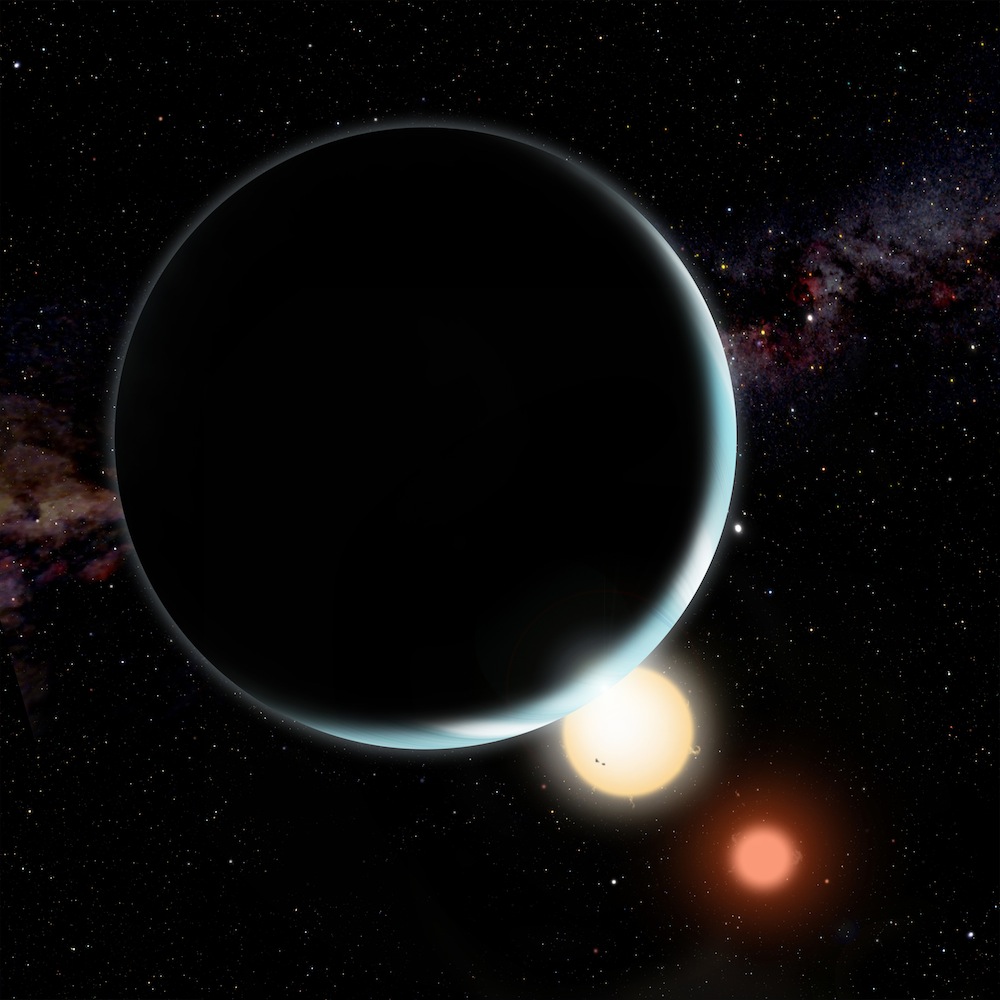Astronomers Have Discovered a Real Version of Tatooine
It Came From Outer Space

There are very few such situations in the entire universe that are even close to Kepler-16b’s, but even they have exceptions keeping them from being as special. The star Gamma Cephai is one in a binary system — two stars that are so close they both orbit around one gravitational mass — that has a planet orbiting around it, but that planet is only orbiting around the single star. Most binary systems have two stars with an orbiting planet, but one of those stars is a dead star or a neutron star. But Kepler-16b is the first planet seen to be orbiting around two full-fledged stars, albeit small ones.
Binary systems are found when the stars are observed eclipsing each other, blocking each other’s light and causing a decrease in the amount of light being emitted from the system. But Kepler-16b was found when there was an additional dip in the amount of light, something causing another eclipse:
After observing the pair for some time, a third dip in the system’s light was seen happening at odd intervals. It was clearly due to a planet, but if this object orbited one star or the other, the transits would happen at regular intervals. The staggered time between dips, though, indicated it was actually in a wide orbit around both stars: as it orbits, it blocks one star’s light, then the other’s, and the timing between those mini-eclipses changes as the two stars orbit each other.
And that’s how we discovered Tatooine! Well, not really. However, the same observations helped astronomers determine Kepler-16b’s size — 100,000 km (60,000 miles), roughly the size of Saturn. But even though both of the stars are only about 100 million kilometers (65 million miles) from the planet — about the same distance between Venus and our Sun — both stars don’t give off enough heat to make kepler-16b warm. So there are probably not any humanoid aliens like Luke Skywalker gazing into a double sunset from Kepler-16b.
But we can probably imagine the Doctor swinging by for the view in the TARDIS, can’t we?
(via Bad Astronomy)
Have a tip we should know? tips@themarysue.com